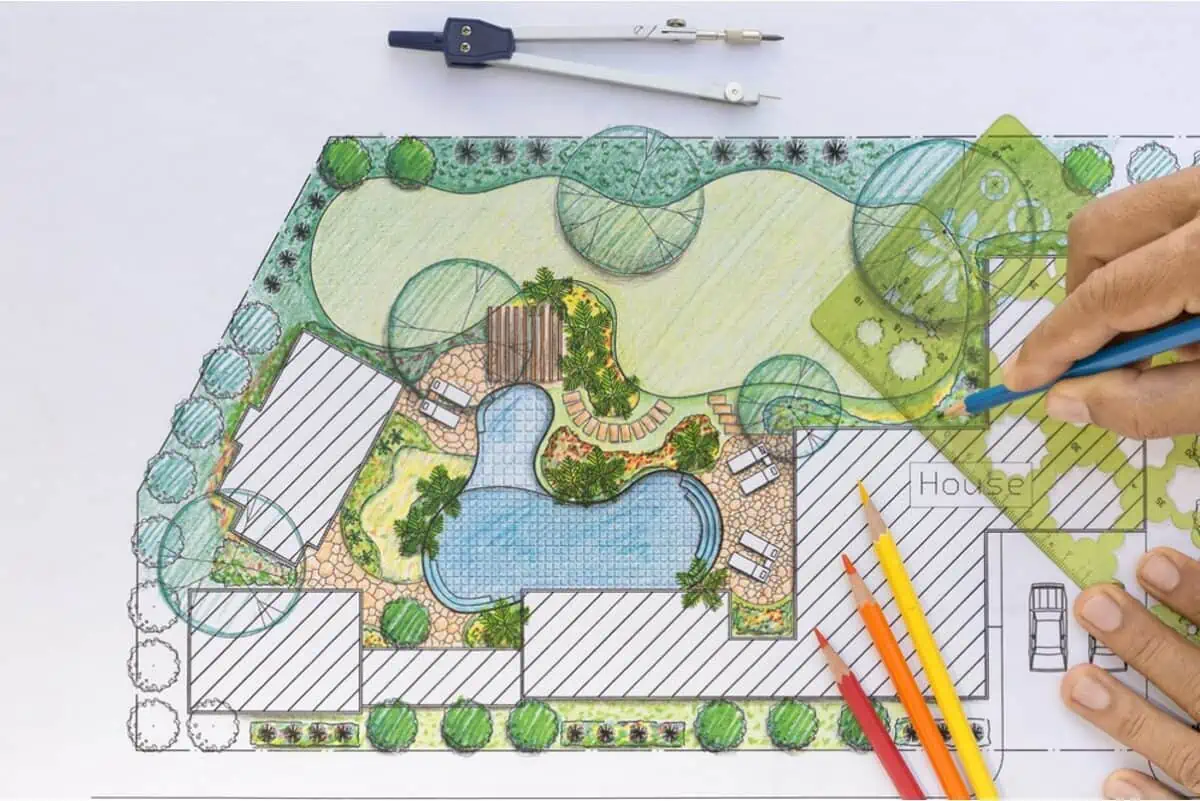Before the widespread of Internet, landscape designers primarily relied on traditional hand-drawing techniques for landscape design. To better showcase their conceptual ideas, they often crafted physical models using various materials such as wood, plastic, and clay.
More than that, all land information and terrain data were manually measured and surveyed through on-site inspections.
However, the advent of CAD completely revolutionized the landscape design. Designers could now use landscape design software to assist in the design process, making everything much more efficient and convenient.
CAD moves landscape design beyond mere paper and allows accessibility from anywhere with an internet connection. In this article, we will delve into the importance of CAD for landscape design, and explore the best landscape design software. If you’re interested in gaining more insights into landscape design CAD software, read on!
Why is CAD for Landscape Design Important
The role of CAD software in landscape design is becoming increasingly prominent. Its significance lies not only in its advanced technology and features but, more importantly, in how it profoundly transforms the entire landscape design field in terms of methods and efficiency. Now, let’s delve into why landscape design CAD software has become an indispensable tool in modern landscape design.
Meet Industry Standards
As a computer-aided tool, landscape design CAD software exhibits higher precision in dimensions and proportions, enabling landscape designers to achieve greater accuracy and compliance with industry specifications.
Moreover, CAD software is capable of generating file formats specific to a particular industry, like DWG, DXF, and DGN, facilitating seamless interaction among designers within that field.
Boost Efficiency with Commands
Landscape design CAD software empowers designers to rapidly and precisely create design elements through a variety of drawing and modification commands. This is particularly advantageous for the creation of repetitive elements, like the vegetation along the sidewalks in landscape designs, as designers can efficiently replicate and arrange various elements using commands, eliminating the need for manual drawings.
What’s even more impressive is the support for parametric design in some CAD tools. Designers can directly set parameters to adjust the dimensions and shapes of various outdoor elements in the design, eliminating the need for a complete redraw.
Integrate Landscape Tools
Achieving an all-encompassing set of features within a CAD software can be nearly impossible without making the software cumbersome and slow. Recognizing this challenge, some landscape design CAD software now offers the option to integrate with third-party apps through APIs.
With the inclusion of these plugins or tools, the entire landscape design process can seamlessly occur within a single software environment. This not only eliminates the complexities of switching between software but also elevates the level of automation in the design workflow.
Extensive Symbols and Blocks
In landscape design, one of the most tedious tasks is undoubtedly the drawing of various landscape elements. It requires a significant investment of time and effort. CAD software comes equipped with industry-standard block libraries and templates that house a diverse array of symbols and elements essential for landscape design.
Designers can directly utilize these symbols and blocks to present their ideas, eliminating the need for repetitive drawing, and enhancing the consistency of the design.

Easy to Creation and Revision
Landscape design CAD tools are computer-based. This characteristic ensures that designers within a team can view and modify design drawings, even when they are in different locations. What’s more, if clients or construction teams need access to landscape design drawings, it’s also convenient to update and share files through online connectivity.
What is the Best CAD Software for Landscape Design
As discussed earlier, CAD tools play a pivotal role in shaping and presenting landscape design solutions. To maximize design efficiency, choosing a powerful and flexible CAD software is crucial. Here, we introduce what is considered one of the most outstanding landscape design CAD software—ZWCAD.
ZWCAD is all-round software not only suitable for landscape design but also a great program commonly applied in interior design, civil engineering, architectural design, and more. ZWCAD has always been favored by users for its exceptional performance and efficient operations.
It takes full advantage of multi-core CPUs, ensuring smooth performance in various operations, whether it’s opening drawings, zooming in, zooming out, or editing files. ZWCAD is able to open a drawing of around 400MB within 35 seconds, which places it ahead of other landscape design software in terms of efficiency.

While ZWCAD is generic CAD software, it supports API integration. In other words, you can connect ZWCAD with other landscape design software, databases, or third-party applications to better meet your design requirements. This toolkit significantly enhances ZWCAD’s flexibility and enables automated design processes.
Beyond its fundamental 2D and 3D design capabilities, ZWCAD stands out with the development of Smart Features, such as Smart Plot, Smart Mouse, and Smart Select. These features streamline complex and repetitive operations, greatly improving drawing efficiency.
Better still, many landscape design software options typically require monthly or yearly subscriptions, which can accumulate into a considerable expense over the long term. ZWCAD offers a cost-effective solution by providing a one-time purchase option. Therefore, users can pay once and use the software permanently.
Conclusion
Modern landscape design has transcended the era of traditional hand-drawn sketches with paper and pencil. The emergence of CAD software has introduced a multitude of possibilities, providing landscape designers with unprecedented flexibility and efficiency.
Hopefully, you have gained insight into the importance of CAD in landscape design through this article. Then select an excellent tool to assist your landscape design, creating more beautiful landscapes.

